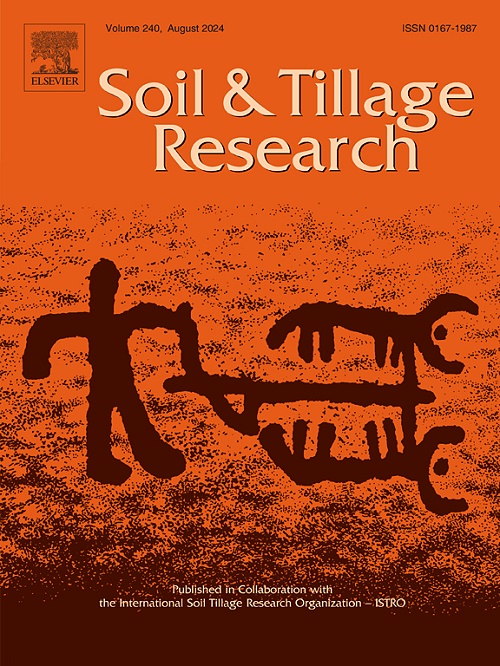Soil organic carbon and nutrient content across agricultural systems in the forest-savannah transition zone of Cameroon
IF 6.1
1区 农林科学
Q1 SOIL SCIENCE
引用次数: 0
Abstract
Accurate knowledge of soil characteristics is indispensable for large-scale agriculture while ensuring sustainability, climate change adaptation, and mitigation, which is lacking in Cameroon. This study aimed to assess soil organic carbon (SOC) and nutrient (NPK) content across agricultural systems in the forest-savannah transition zone of Cameroon. Seven agricultural systems were identified namely: the forest-based cocoa agroforestry (Fcocoa), savannah-based cocoa agroforestry (Scocoa), transition zone-based cocoa agroforestry (Tcocoa), savannah mixed cropping of yam, pumpkin, and maize (Sypm), savannah mixed cropping of groundnut, cassava and maize (Sgcm), transition zone mixed cropping of yam, pumpkin, and maize (Typm), and the transition zone mixed cropping of groundnut, cassava, and maize (Tgcm). The soil was sampled at two depths, 0–10 cm (upper layer) and 10–30 cm (lower layer) in three replicates for each farming system and analyzed. Significant differences appeared in soil organic carbon (SOC) (p < 0.002), Total nitrogen (N) (p < 0.001), C:N ratio (p < 0.002), pH (p < 0.01), bulk density (Bd) (p < 0.03), soil organic carbon stock (SOCS) (p < 0.001), and soil nitrogen stock (SNS) (p < 0.001). In the upper and lower layers, the highest concentrations of SOC (25.0 and 16.6 g kg−1), N (2.3 and 1.5 g kg−1), and P (5.1 and 3.3 g kg−1) were recorded in Fcocoa, and K (176.9 and 129.3 mg kg−1) in Scocoa respectively. In the croplands, soil nutrient content was higher in the transition zone while savannah croplands showed higher Bd (≥ 1.4 g cm−3). Soil nutrient content decreased from upper to lower soil layers with a significant difference (p < 0.05) in the croplands for pH, SOCS, and SNS, with a higher magnitude (p < 0.01) in Sgcm. Thus, agroforestry can be considered a potential solution towards ecological resilience.
求助全文
约1分钟内获得全文
求助全文
来源期刊

Soil & Tillage Research
农林科学-土壤科学
CiteScore
13.00
自引率
6.20%
发文量
266
审稿时长
5 months
期刊介绍:
Soil & Tillage Research examines the physical, chemical and biological changes in the soil caused by tillage and field traffic. Manuscripts will be considered on aspects of soil science, physics, technology, mechanization and applied engineering for a sustainable balance among productivity, environmental quality and profitability. The following are examples of suitable topics within the scope of the journal of Soil and Tillage Research:
The agricultural and biosystems engineering associated with tillage (including no-tillage, reduced-tillage and direct drilling), irrigation and drainage, crops and crop rotations, fertilization, rehabilitation of mine spoils and processes used to modify soils. Soil change effects on establishment and yield of crops, growth of plants and roots, structure and erosion of soil, cycling of carbon and nutrients, greenhouse gas emissions, leaching, runoff and other processes that affect environmental quality. Characterization or modeling of tillage and field traffic responses, soil, climate, or topographic effects, soil deformation processes, tillage tools, traction devices, energy requirements, economics, surface and subsurface water quality effects, tillage effects on weed, pest and disease control, and their interactions.
 求助内容:
求助内容: 应助结果提醒方式:
应助结果提醒方式:


